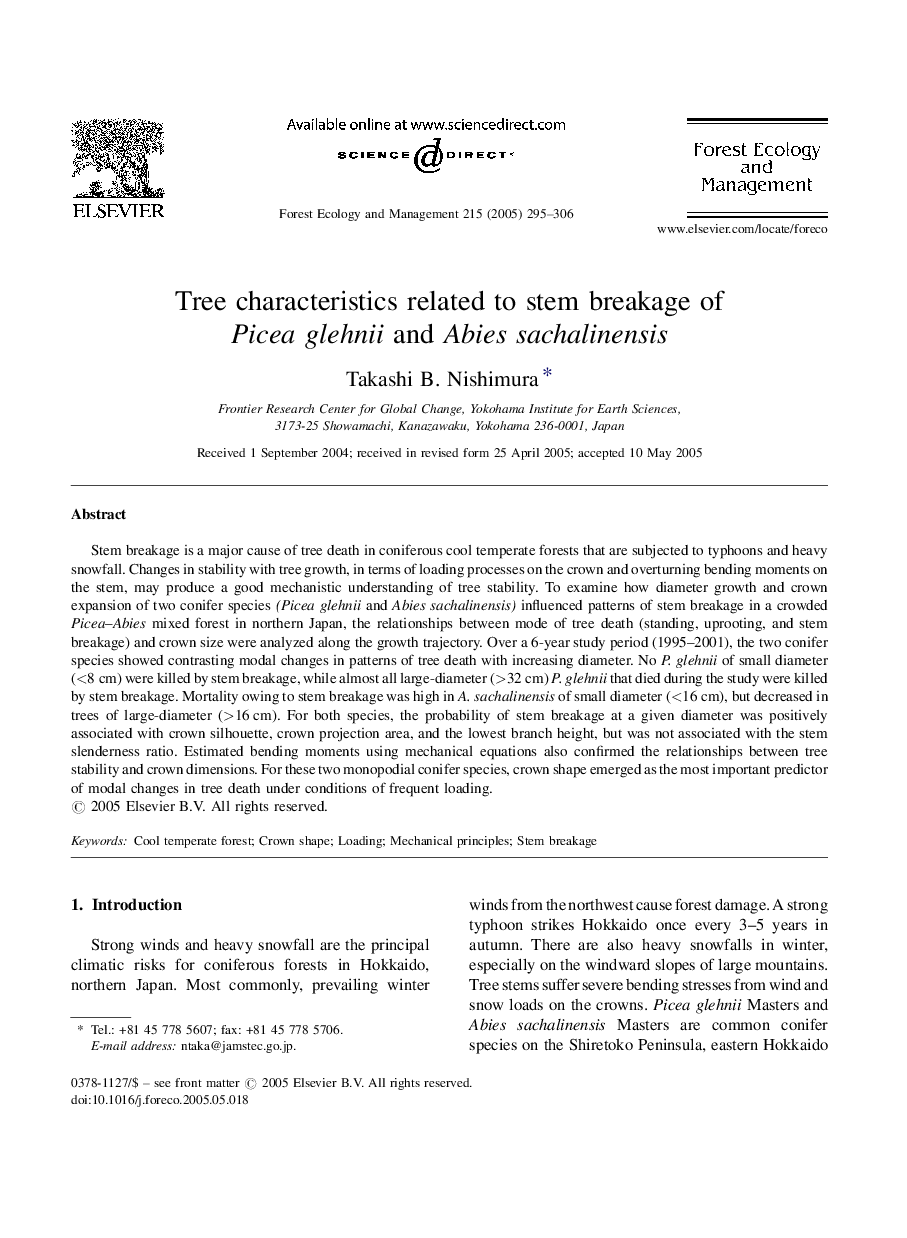| Article ID | Journal | Published Year | Pages | File Type |
|---|---|---|---|---|
| 9620215 | Forest Ecology and Management | 2005 | 12 Pages |
Abstract
Stem breakage is a major cause of tree death in coniferous cool temperate forests that are subjected to typhoons and heavy snowfall. Changes in stability with tree growth, in terms of loading processes on the crown and overturning bending moments on the stem, may produce a good mechanistic understanding of tree stability. To examine how diameter growth and crown expansion of two conifer species (Picea glehnii and Abies sachalinensis) influenced patterns of stem breakage in a crowded Picea-Abies mixed forest in northern Japan, the relationships between mode of tree death (standing, uprooting, and stem breakage) and crown size were analyzed along the growth trajectory. Over a 6-year study period (1995-2001), the two conifer species showed contrasting modal changes in patterns of tree death with increasing diameter. No P. glehnii of small diameter (<8Â cm) were killed by stem breakage, while almost all large-diameter (>32Â cm) P. glehnii that died during the study were killed by stem breakage. Mortality owing to stem breakage was high in A. sachalinensis of small diameter (<16Â cm), but decreased in trees of large-diameter (>16Â cm). For both species, the probability of stem breakage at a given diameter was positively associated with crown silhouette, crown projection area, and the lowest branch height, but was not associated with the stem slenderness ratio. Estimated bending moments using mechanical equations also confirmed the relationships between tree stability and crown dimensions. For these two monopodial conifer species, crown shape emerged as the most important predictor of modal changes in tree death under conditions of frequent loading.
Keywords
Related Topics
Life Sciences
Agricultural and Biological Sciences
Ecology, Evolution, Behavior and Systematics
Authors
Takashi B. Nishimura,
